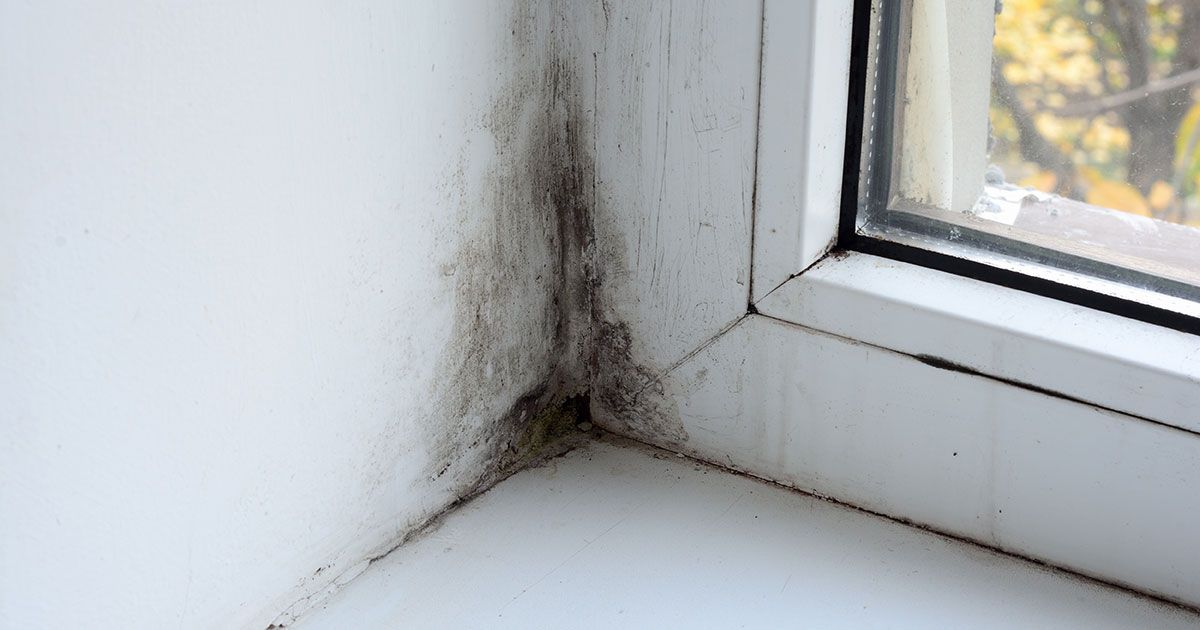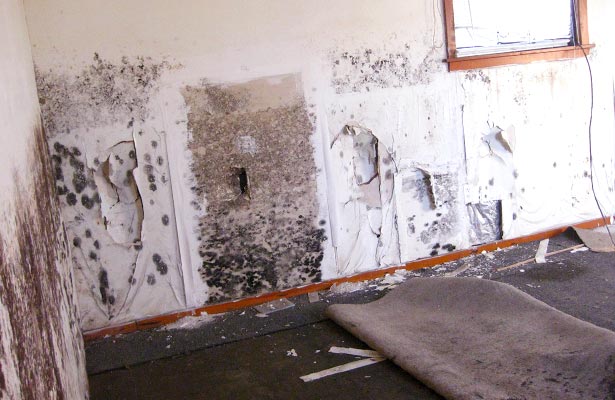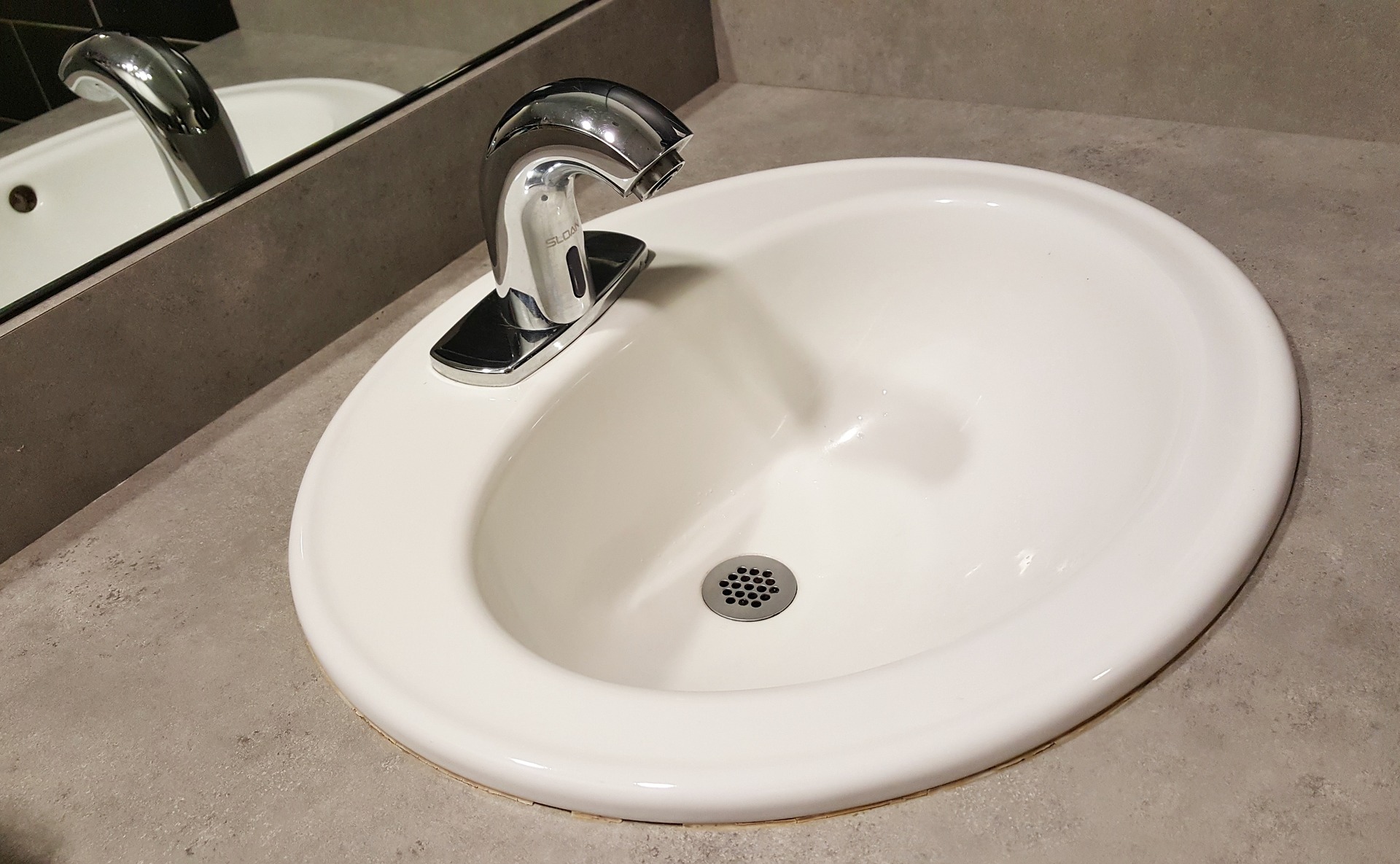Black mold is a common problem in many households, and one place you may find it is in your bathroom sink drain. This dark, slimy substance can not only be unsightly, but it can also pose health risks to you and your family. In this article, we will discuss the causes of black mold in bathroom sink drains, how to prevent it, and the best methods for removing it.Black Mold in Bathroom Sink Drain: Causes, Prevention, and Removal
If you've noticed black mold in your bathroom sink drain, the first step is to clean it thoroughly. You can start by pouring boiling water down the drain to loosen any buildup. Next, use a mixture of equal parts water and white vinegar to scrub the drain and surrounding areas. The acidic properties of vinegar can help kill and prevent mold growth. If the mold is stubborn and won't come off, you can try using a mixture of baking soda and water instead. This will create a paste that you can apply to the affected area and let sit for 10-15 minutes before scrubbing. You can also use a mold and mildew remover specifically designed for bathroom surfaces.How to Get Rid of Black Mold in Your Sink Drain
1. Wear protective gear - Before attempting to remove black mold from your sink drain, make sure to wear gloves, a mask, and protective eyewear to avoid any contact with the mold. 2. Use natural cleaners - As mentioned earlier, vinegar and baking soda are effective and natural cleaners that can help get rid of black mold. Avoid using harsh chemicals as they can be harmful to your health and the environment. 3. Scrub thoroughly - When cleaning the mold, make sure to scrub the affected area thoroughly to ensure all the spores are removed. You can also use an old toothbrush to reach small crevices. 4. Dry the area - After cleaning, make sure to dry the area completely to prevent any remaining spores from growing. You can use a fan or open a window to promote air circulation and speed up the drying process. 5. Dispose of cleaning materials properly - When disposing of the cleaning materials, make sure to seal them in a plastic bag and throw them away immediately to prevent spreading the mold to other areas of your home.5 Tips for Removing Black Mold from Your Bathroom Sink Drain
Black mold, also known as Stachybotrys chartarum, can cause a variety of health issues if left untreated. Some common symptoms of black mold exposure include respiratory problems, headaches, and skin irritation. In severe cases, it can even lead to neurological issues and memory loss. It is especially dangerous for those with weakened immune systems or pre-existing respiratory conditions. In addition to health risks, black mold can also cause damage to your home. It can eat away at the pipes and cause leaks or clogs, leading to costly repairs. It can also create a musty odor in your bathroom and make the area less inviting for guests.The Dangers of Black Mold in Your Bathroom Sink Drain
The overflow drain, located at the top of your bathroom sink, is another area where black mold can grow. To clean it, you can follow the same steps as cleaning the main drain. However, you may need to use a small brush or toothpick to clean the small crevices and remove any buildup in the overflow holes. Another effective method for cleaning the overflow drain is by using a mixture of hydrogen peroxide and water. This can help kill the mold and prevent it from growing back.How to Clean Black Mold from Your Overflow Drain
Prevention is key when it comes to black mold in your sink drain. Here are some tips to keep your overflow drain clean and mold-free: - Regularly clean and dry your sink and overflow drain to prevent any moisture buildup. - Fix any leaks or plumbing issues as soon as possible to prevent mold growth. - Use a drain catch to prevent hair and other debris from clogging the drain, which can create a breeding ground for mold. - Run hot water down the drain after each use to help flush out any potential mold spores.Preventing Black Mold in Your Bathroom Sink Overflow Drain
If you prefer to use commercial products to clean black mold from your sink drain, look for ones that are specifically designed for bathroom surfaces and contain ingredients like hydrogen peroxide or tea tree oil. These natural ingredients are effective in killing mold without the use of harsh chemicals. You can also find mold and mildew removers that come in spray bottles, making it easier to reach the affected areas and scrub away the mold.The Best Products for Removing Black Mold from Your Sink Drain
A common cause of black mold in bathroom sink drains is a leaking overflow drain. To detect and fix this issue, you can follow these steps: 1. Fill your sink with water and let it drain. While the water is draining, check the overflow drain for any leaks or water coming out. 2. If you notice a leak, you can try tightening the screws or bolts that hold the overflow cap in place. If that doesn't work, you may need to replace the rubber gasket or the entire overflow cap. 3. Once the leak is fixed, make sure to clean and dry the area to prevent any mold growth.How to Detect and Fix a Leaking Bathroom Sink Overflow Drain
Regularly cleaning your bathroom sink overflow drain is crucial in preventing black mold growth. By removing any buildup and keeping the area dry, you can prevent mold from growing and spreading to other areas of your bathroom. It can also save you time and money on costly repairs in the future.The Importance of Regularly Cleaning Your Bathroom Sink Overflow Drain to Prevent Black Mold
If you're dealing with a severe case of black mold in your sink drain and overflow, it's best to leave it to the professionals. They have the proper equipment and expertise to safely and effectively remove the mold without causing further damage to your pipes or health. They can also provide tips and recommendations for preventing mold growth in the future. In conclusion, black mold in bathroom sink drains can be a nuisance and a health hazard if left untreated. By following the tips and methods mentioned in this article, you can effectively remove and prevent black mold from growing in your sink drain and overflow. Remember to regularly clean and inspect your drain to catch any issues early on and keep your bathroom safe and mold-free.Professional Tips for Removing Black Mold from Your Bathroom Sink Drain and Overflow
Designing a Bathroom with Mold-Resistant Features

Keep Your Bathroom Clean and Healthy
 When designing a bathroom, one of the most important factors to consider is making sure it is not only aesthetically pleasing, but also functional and hygienic. One common issue that homeowners face is black mold buildup in their bathroom sinks, particularly in the overflow drain. This not only looks unsightly, but it can also pose potential health risks. However, with the right design choices, you can prevent this problem and ensure that your bathroom is a clean and healthy space for you and your family.
When designing a bathroom, one of the most important factors to consider is making sure it is not only aesthetically pleasing, but also functional and hygienic. One common issue that homeowners face is black mold buildup in their bathroom sinks, particularly in the overflow drain. This not only looks unsightly, but it can also pose potential health risks. However, with the right design choices, you can prevent this problem and ensure that your bathroom is a clean and healthy space for you and your family.
The Impact of Black Mold on Your Bathroom
 Black mold, also known as Stachybotrys chartarum, is a type of fungus that thrives in damp and humid environments. Bathrooms, with their constant exposure to moisture, are a prime breeding ground for this type of mold. When left unchecked, black mold can quickly spread and cause damage to your bathroom fixtures, as well as pose health risks such as respiratory issues, headaches, and allergies. This is why it is crucial to take proactive measures to prevent black mold growth in your bathroom.
Black mold, also known as Stachybotrys chartarum, is a type of fungus that thrives in damp and humid environments. Bathrooms, with their constant exposure to moisture, are a prime breeding ground for this type of mold. When left unchecked, black mold can quickly spread and cause damage to your bathroom fixtures, as well as pose health risks such as respiratory issues, headaches, and allergies. This is why it is crucial to take proactive measures to prevent black mold growth in your bathroom.
Mold-Resistant Design Features
 To combat black mold buildup in your bathroom sink, it is essential to incorporate mold-resistant design features into your bathroom. This includes using materials that are resistant to moisture, such as ceramic or porcelain tiles for the walls and floors. Additionally, opting for a sink with a smooth, non-porous surface will make it more difficult for mold to grow and thrive.
Furthermore, consider installing a bathroom fan or improving ventilation to reduce the humidity levels in your bathroom. This will not only help prevent mold growth but also improve air circulation and keep your bathroom smelling fresh. Regularly cleaning and drying your sink and keeping the overflow drain clear of any debris can also help prevent mold from forming.
To combat black mold buildup in your bathroom sink, it is essential to incorporate mold-resistant design features into your bathroom. This includes using materials that are resistant to moisture, such as ceramic or porcelain tiles for the walls and floors. Additionally, opting for a sink with a smooth, non-porous surface will make it more difficult for mold to grow and thrive.
Furthermore, consider installing a bathroom fan or improving ventilation to reduce the humidity levels in your bathroom. This will not only help prevent mold growth but also improve air circulation and keep your bathroom smelling fresh. Regularly cleaning and drying your sink and keeping the overflow drain clear of any debris can also help prevent mold from forming.
Incorporating Natural Light
 Another effective way to prevent black mold in your bathroom is by incorporating natural light into the design. Mold thrives in dark and damp environments, so by increasing the amount of natural light in your bathroom, you can discourage mold growth. This can be achieved by adding a window or skylight, as well as using light-colored paint or tiles to reflect light and make the space feel brighter.
Another effective way to prevent black mold in your bathroom is by incorporating natural light into the design. Mold thrives in dark and damp environments, so by increasing the amount of natural light in your bathroom, you can discourage mold growth. This can be achieved by adding a window or skylight, as well as using light-colored paint or tiles to reflect light and make the space feel brighter.
Conclusion
 In conclusion, black mold in your bathroom sink can be a common and troublesome issue, but with the right design choices, you can prevent this problem and keep your bathroom clean and healthy. By incorporating mold-resistant features, improving ventilation, and increasing natural light, you can create a functional and beautiful bathroom that is also resistant to mold growth. Remember to regularly clean and maintain your bathroom to keep it free from black mold and promote a healthy living environment.
In conclusion, black mold in your bathroom sink can be a common and troublesome issue, but with the right design choices, you can prevent this problem and keep your bathroom clean and healthy. By incorporating mold-resistant features, improving ventilation, and increasing natural light, you can create a functional and beautiful bathroom that is also resistant to mold growth. Remember to regularly clean and maintain your bathroom to keep it free from black mold and promote a healthy living environment.























































/bathroom-sink-drain-installation-2718843-01-4955fe1f576b447a91abe51c126d220b.jpg)



































